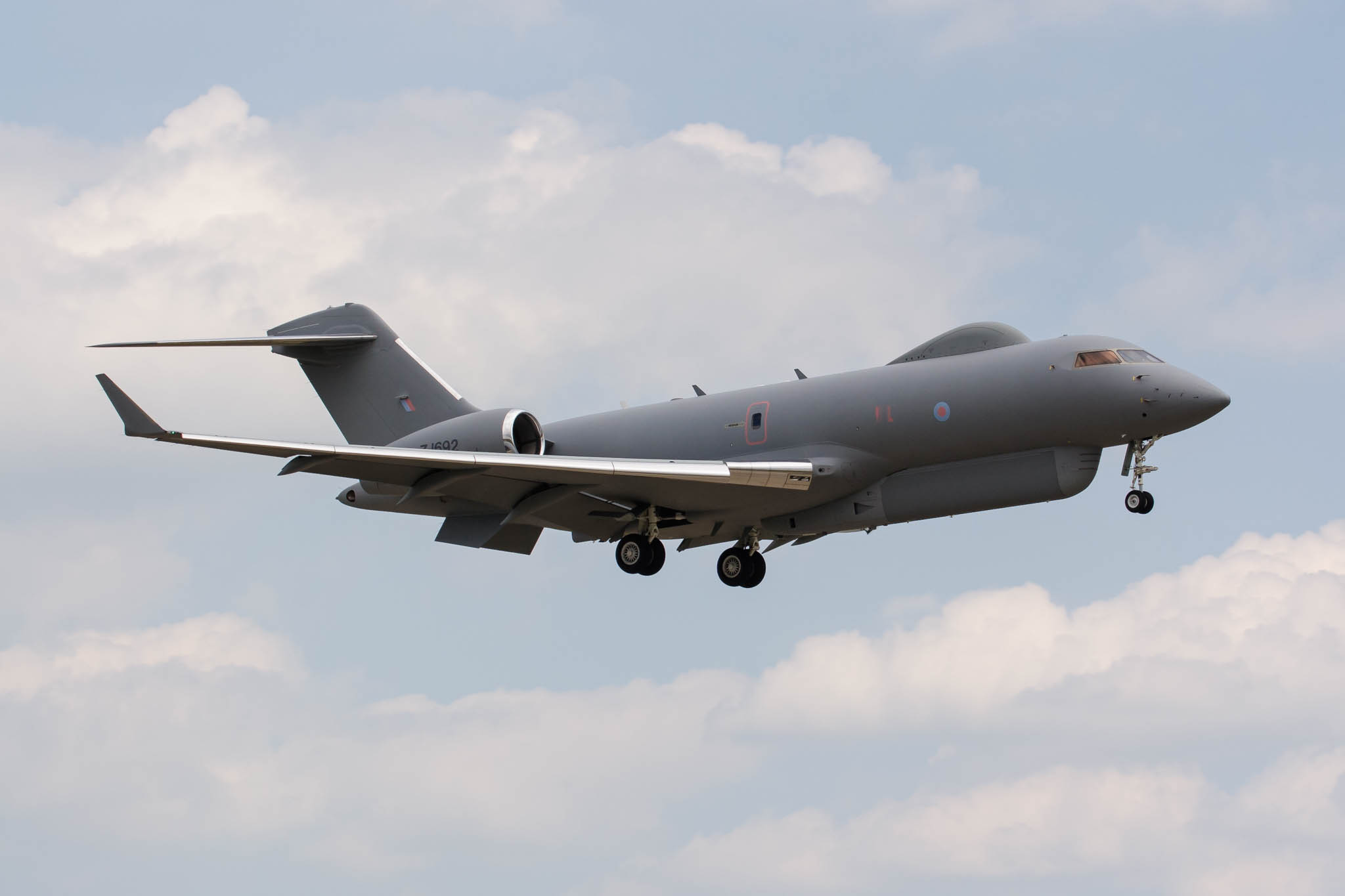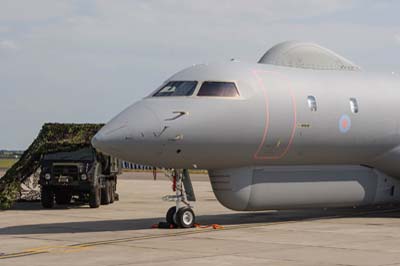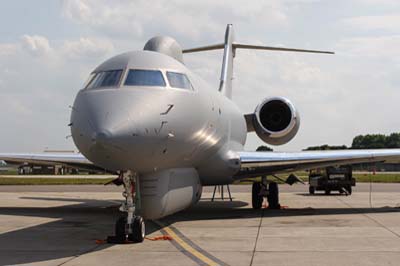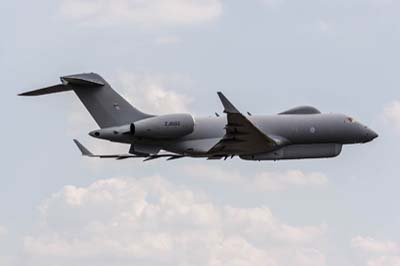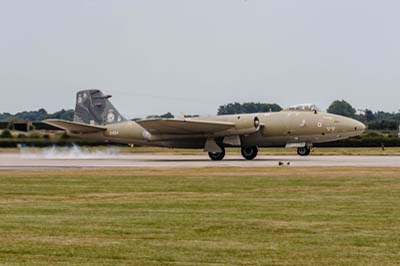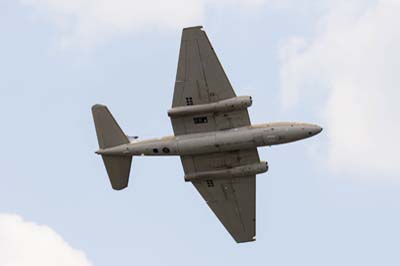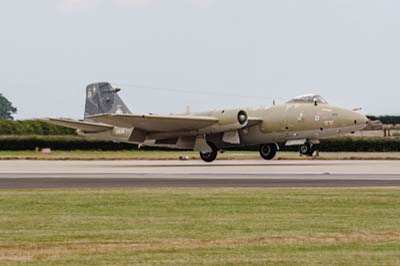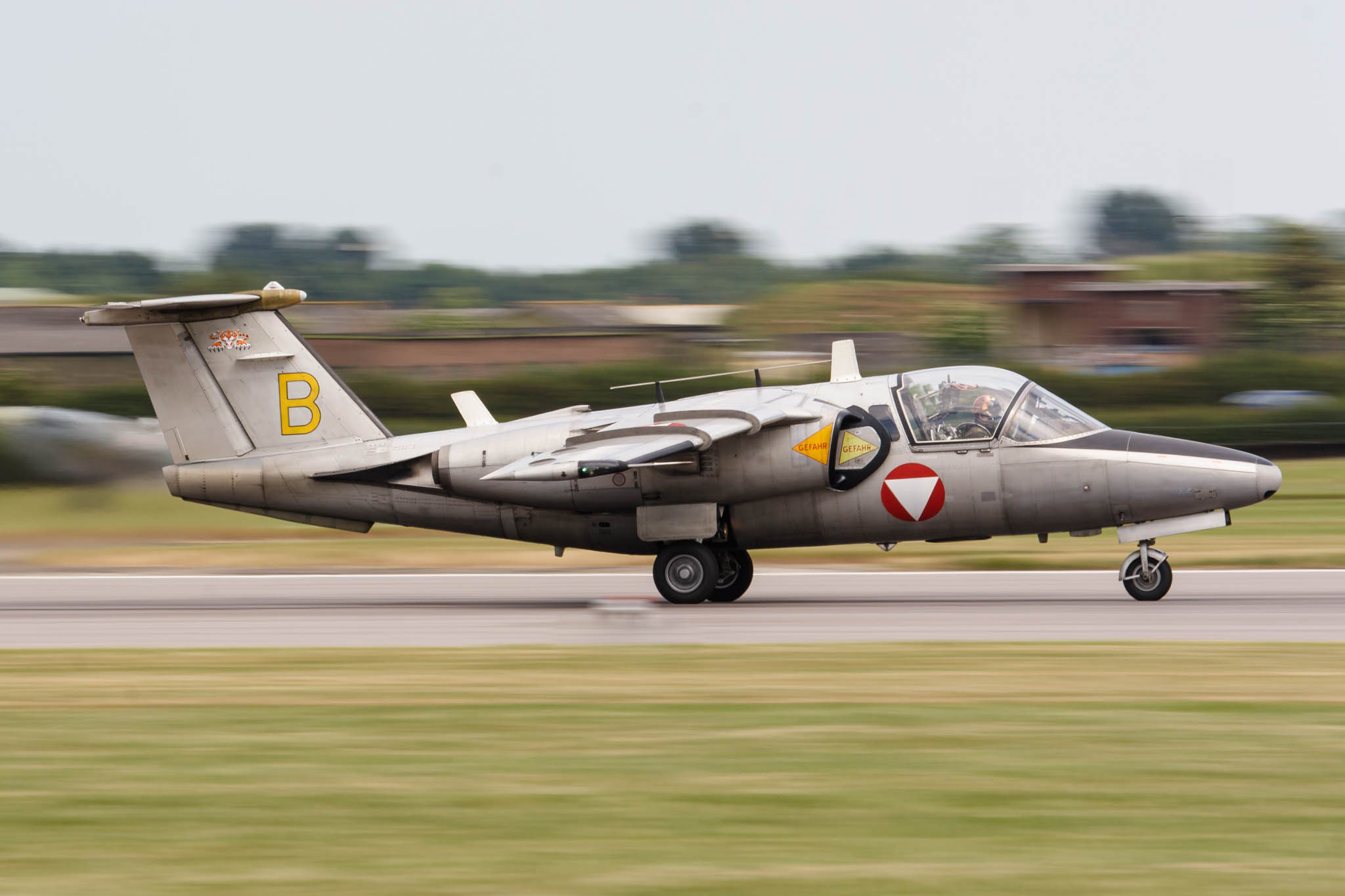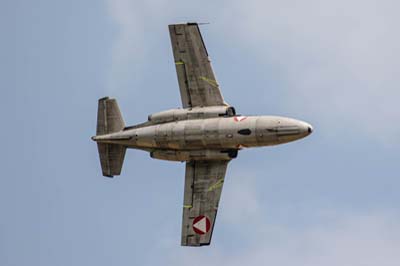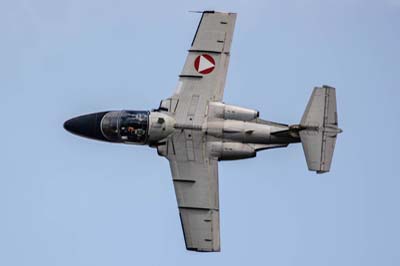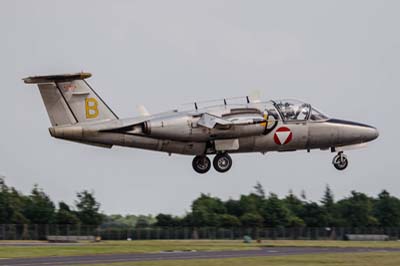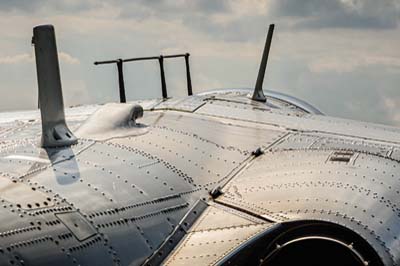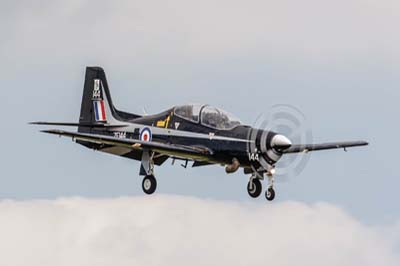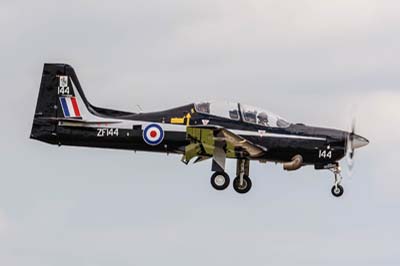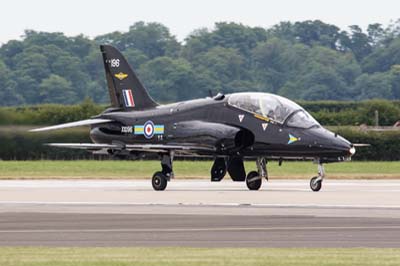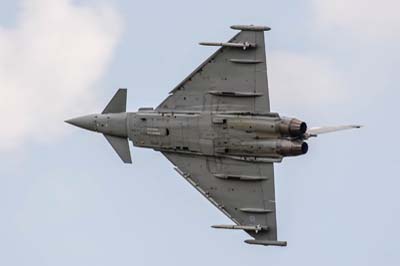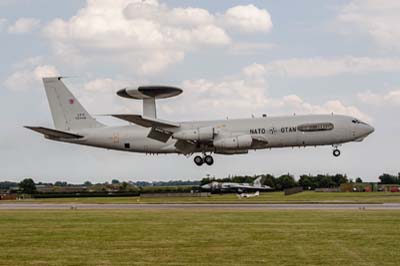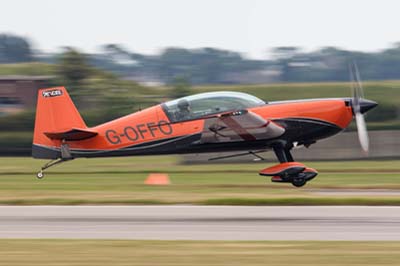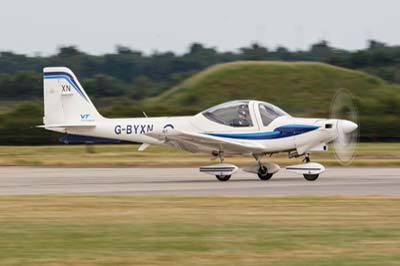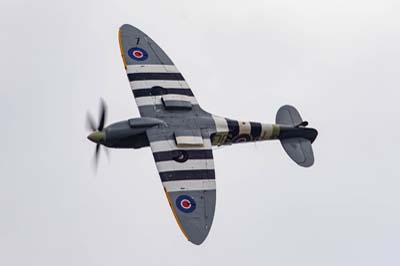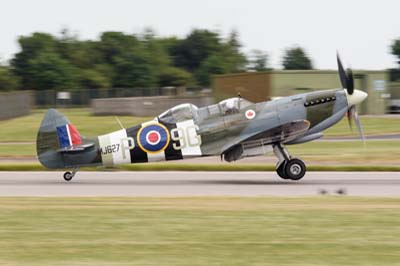12th Waddington International Air Show
RAF Waddington
July 1-2, 2006
|
The Waddington International Air Show has become this country's second biggest. As with all annual events the organisers have to keep coming up with new ideas to keep us all interested and entertained. This is where Waddington succeeds and why the public turns up in huge numbers. Around 70,000 attended the show on both the Saturday and the Sunday.
Wing Commander Jones OC 51 Squadron over saw another very successful show. The highlights as presented were; the first public display of the Sentinel, a farewell to the Canberra and a 70th anniversary display of the Spitfire. Last year's show raised an amazing £338,000 for charity it was hoped a similar amount would be raised this year. 40 UK based aircraft complimented aircraft visiting from eight countries. |
| The ASTOR equipped Sentinel R.1 (ZJ692) captured arriving at Waddington its intended base for the first time. |
| 5 (AC) Squadron was re-formed at RAF Waddington on April 1, 2004 to operate the Airbourne Stand-off Radar (ASTOR) radar surveillance system. The Squadron when fully operational (by April 2007) will comprise five Bombardier Sentinel R.1 aircraft and eight Tactical Ground Stations (TGS). Six of the ground stations will be vehicle based (see image above left) and will by operated jointly by RAF and Army personnel (hence Army Cooperation 'AC' in squadron title). The aircraft are fitted with an extensive suite of military communication equipment, consisting of a satellite communication (SATCOM), VHF, UHF and HF radios and provide high speed data links to airborne and ground forces. The Sentinel's radar operates in two modes, the Synthetic Aperature Radar (SAR) which uses powerful processing techniques to present photo-like imagery of ground targets and a Ground Moving Target Indication (GMTI) mode, which detects target movement in the air and on the ground. Compatible with the USAF's similar JSTARS system, it will provide commanders of forces deployed anywhere in the world with real-time data to enhance mission planning. |
| Waddington was chosen as the first public display to mark the Canberra's farewell after 50 years of active service, prior to the disbandment in four weeks of 39 (1 PRU) Squadron at RAF Marham. The Canberra first flew in 1949 and was worlds first jet powered bomber gaining 20 World records during it impressive career in service. Above : Canberra PR.9 (XH134). |
| SAAB 105 (yellow 'B') of the Austrian Air Force during take-off for it's display. |
| The Austrian SAAB 1005 during it's display. The final image is a close up of the aircraft's upper services showing its rivet construction which reveals its age. |
| Tucano T.1 (ZF144) landing in good light a slow shutter speed was used to give good prop' blur. |
| Left to right: 208(R) Squadron Hawk T.1 (XX196) prepares for take off, 29 Squadron Typhoon F.2 (ZJ911 'BZ') and NATO Boeing E.3A (LX-N90446). |
| Left to right: Extra 300 LP (G-OFFO) of the 2Excel Blades, the latest four ship display team, Tutor (G-BYXN) and the unusual two-seat Spitfire Mk.9c (T.9) (G-BMSB / MJ627 coded '9G-P'). It was converted to two-seats in 1950. |
The air show offered far more than described. I have tried to focus on what I consider were the highlights of the day. Photography whilst good, is still challenging with the sun being in your face for most of the day. It is only towards mid-afternoon does it begin to work with the large number photographers. We all look forward with huge anticipation to what the Waddington team can come up with for next year. The challenge is on once again, to come up with something just a little different for 2007.
The images representing this year's Waddington Airshow report were selected for two reasons. Firstly to reflect the aircraft that I particularly wanted to see, the RAF Sentinel for the first time and the RAF Canberra for almost the last time. Secondly for the images I am a little pleased with such as the slow shutter speed landing and close-up of the Austrian SAAB 105.
|
